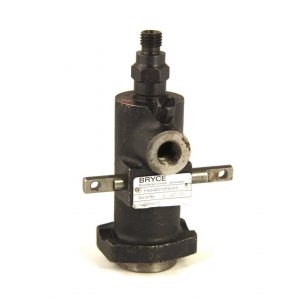Bleeding the pump well is essential before attempting to start the engine. These fuel pumps are very sensitive to any air in the system and will not inject fuel without following this process.

Check that the fuel pump tappet is at its lowest position (use the fuel pump tappet adjustment access door below the fuel pump) Fill the fuel tank and make sure that there is a good head of fuel (at least 6 inches above the top of the fuel pump)
Make sure the fuel filter has been renewed and that all the fuel lines are clear. Removal of the bleed / vent screw (7) may not be enough to purge the air from the pump, especially if it’s brand new.
If fuel will not flow readily from the bleed screw, remove the top delivery valve union (20) and spring, spring peg, seal and valve beneath (16,17,19,21 – be careful not to loose these small parts) and wash them in clean diesel before refitting. There should be a good flow of diesel from the top of the pump, with no bubbles.
If after bleeding the pump fails to pump fuel, check that the control rack (6) is free moving. Move rack all the way to the left. Make sure that the spill timing cut off is correct (see your engine instruction manual). Make sure that if the delivery valve has been removed that it is replaced correctly with its spring, and that the washer is sealed correctly beneath the delivery valve union.
If the pump is injecting fuel and the engine smokes but will not start, then the pump may require timing adjustment (screw timing adjustment – tappet up towards fuel pump advances the timing)
If any fuel leaks from the pump inlet union, it is recommended to use a thread sealant such as Loctite 542 Hydraulic Seal. Do not use PTFE tape. If applying sealant, make sure that the threads are clean, degreased and free of foreign matter. Only apply a sealant after you are satisfied that the pump working correctly and has been spill timed.

